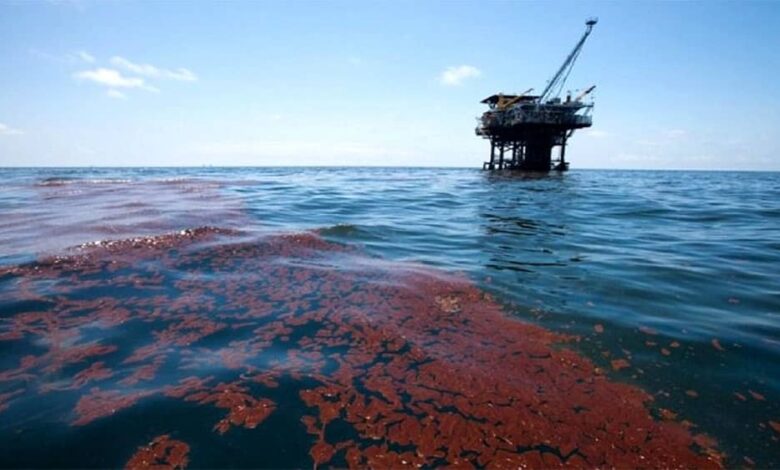Environmental Consequences of Aging Oil Pipelines in Iran

iran persian gulf oil leak (1)
Written by
Mehdi Oghbai
Recent reports have drawn attention to a significant issue in Iran involving oil leaks and their resulting environmental disasters. A recent incident, occurring on August 28, was reported through state media. It involved a leak from a pipeline responsible for transporting crude oil from Ganaveh Port to Khark Island in the Persian Gulf. This occurrence is not an isolated event but rather part of a recurring challenge associated with Iran’s aging oil and gas pipelines. Moreover, just prior to this incident, another pipeline, which was transporting petroleum products, experienced an explosion in the vicinity of Kashar village in Bandar-e Khomeini.
The history of these pipelines, which transport oil for ship loading from Ganaveh Port to Khark Island, Iran’s primary oil export terminal, spans over half a century. It is no surprise that these aging pipelines occasionally develop leaks. In recent years, there have been multiple reports of oil leaks from these pipelines affecting the Persian Gulf’s shores. According to a report by the semi-official ISNA news agency on August 22, 2022, one million tons of crude oil are leaked into the Persian Gulf annually.
The lack of investment in renovating or replacing these aging pipelines is evident, as the current regime prioritizes revenue maximization over pipeline maintenance. Replacing these pipelines is an expensive endeavor, one that the regime is unwilling to undertake.
Notably, four years ago, in September 2019, a significant oil leak occurred from one of these pipelines, leading to extensive contamination that reached Bandar Ganaveh’s shores. Astonishingly, it took officials eight days to respond, following images released by a petroleum transport company showing an extensive oil slick covering 20 kilometers. Moreover, in 2016, a gas pipeline located 30 kilometers from Ganaveh exploded and caught fire, resulting in one fatality and several injuries. In an earlier incident in 2009, the Abuzar field pipelines caused extensive oil contamination, stretching over 28 kilometers.
The International Energy Agency reported that Iran experiences annual natural gas leaks, resulting in the release of approximately 7.5 billion cubic meters of methane gas. This volume of leaked gas surpasses the entire consumption of countries like Greece and the Czech Republic. The estimated value of this wasted gas stands at around $3 billion annually, equivalent to 10% of Iran’s public budget. Unfortunately, unlike many neighboring Persian Gulf countries, Iran lacks advanced systems for monitoring and controlling pipeline leaks and authorities seem to react only when extensive oil slicks appear on the shores.
A large stretch of the Iranian coast along the Persian Gulf has been polluted by an oil leak from an offshore pipeline, state-run Islamic Republic News Agency reports https://t.co/vPwXeTczUS
— Bloomberg (@business) August 28, 2023
Environmental Consequences of Oil Leaks
Oil and its derivatives leaking into aquatic environments have severe and long-lasting consequences for affected regions, including harm to marine life, aquatic species, and seabirds. Oil spills usually have two main types of impacts: stable and unstable.
Unstable oil spills tend to rapidly disperse across the water’s surface, while stable spills remain less prone to spreading and tend to sink deeper into the water. When crude oil enters a marine environment, it triggers various physical and chemical processes that affect the area. These processes include both the spreading and dispersion of pollutants on the water’s surface and the deposition of oil residues on the seabed.
Chemical processes, often facilitated by sunlight, play a significant role in breaking down oil components, resulting in the formation of floating tar-like masses on the water’s surface. Meanwhile, substances that settle on the seafloor remain in place. Additionally, biological processes occur gradually, with microorganisms playing a crucial role in breaking down oil substances, transforming them into carbon dioxide or organic materials that rise to the water’s surface.
Response and Accountability
Addressing oil spills requires immediate and efficient cleanup efforts carried out by specialized teams with appropriate equipment. Prolonged exposure to crude oil materials can have detrimental effects on human health, emphasizing the importance of safety precautions for cleanup crews.
Oil slicks forming underwater directly impact marine life, as these encounters are frequent. Microbes responsible for breaking down oil substances become more active, depleting oxygen levels in the water, which affects aquatic organisms dependent on oxygen for survival. Consequently, these aquatic creatures are at risk of suffocation and death.
Oil pollution entering the marine food chain has far-reaching consequences that are not yet fully understood. However, scientists believe that major oil pollution incidents can leave a lasting legacy in affected regions for years to come. In the Persian Gulf, a relatively enclosed body of water heavily trafficked by ships, these oil pollutants have led to the endangerment of all five species of sea turtles inhabiting these waters.
Predictably, within the clerical regime, no entity assumes comprehensive responsibility for safeguarding Iran against oil pollution. Despite the presence of various organizations like the Ports and Maritime Organization, Fisheries, Environmental Protection agencies, and the Ministry of Oil, none seem to shoulder the principal duty of protecting against marine pollution. To rescue Iran’s environment, the most effective approach would involve addressing the primary source of pollution on both land and sea; the regime itself.

